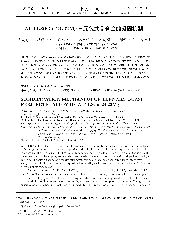摘要
In the field of condensed matter physics and materials science, it is of great importance to investigate the microstructures, properties and solidification regularities of liquid metals. In the last few decades, the theories of solidification of binary alloys, such as dendritic growth and eutectic growths have been built. Great progress has also been made on the study of monetectic and peritectic alloys. But a solidification theory on ternary quasiperitectic alloys has not been established up to now. The study of the solidification process of quasiperitectic alloys will provide a basic work for solidification theories of ternary alloys.
The master alloy of Al-11.8Cu-24.22Mg was prepared from pure Al (99.99%), pure Mg (99.99%) and Al-54.2Cu in a resistance furnace under CO2 and SF6 (volume proportion is 40 : 1) atmosphere. The melted alloy (840-850 degrees C) was pouring into different quenching graphite crucibles at the same time, and the cooling curves were recorded by a sixteen channels temperature recorder. The graphite crucible was quenched into cold-water immediately for rapid cooling at the preplanned quenching temperature. After the experiment, the microstructures of the sample were analyzed by SEM, with EDS analysis.
The experiment result indicates that the primary phase is identified as S (Al2CuMg) and the quasiperitectic phases are alpha-Al and T (Al6CuMg4). The solidification microstructure is composed of remnant primary phase, quasiperitectic phases, binary eutectic and ternary eutectic. Although the quasiperitectic phases and binary eutectic are composed of the same phases (alpha-Al+T(Al6CuMg4)), their structures are different. The former structure presents strip form and the later present dendritic form. The ternary eutectic reaction is suppressed and the remnant primary S phase is reserved in the matrix with non-equilibrating crystallization.
